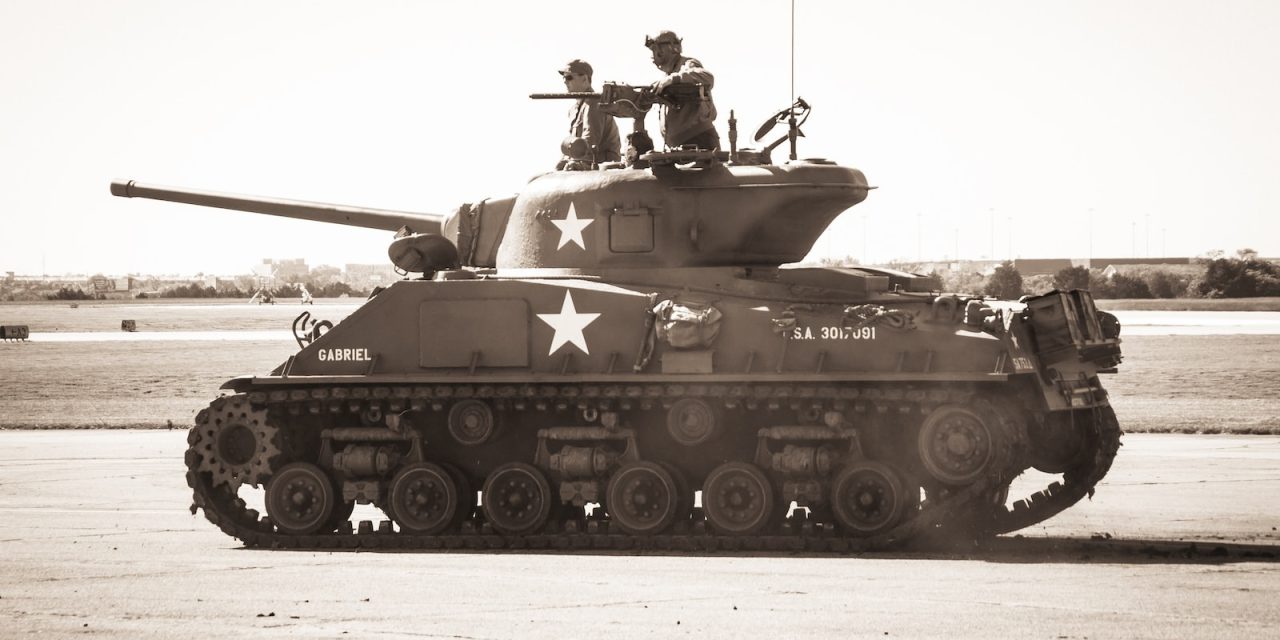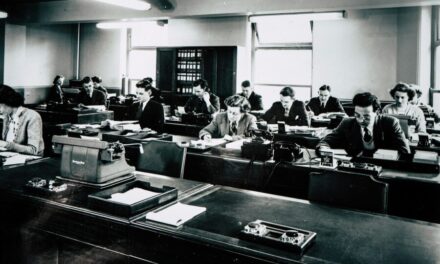Tracing one’s ancestry can be an exciting and rewarding journey, but it can also be a challenging one. While there are many resources available for genealogists, military records are often overlooked. However, they can provide a wealth of information about an ancestor’s life and service to their country.
In this article, we have explored the value of military records in tracing ancestry, including their ability to provide detailed information about military service, personal details, and historical context. By utilising these records, genealogists can gain a deeper understanding of their ancestors and their place in history.
Table of Contents
Introduction to Military Records
Military records are a valuable resource for genealogists and historians tracing their ancestry. These records provide a wealth of information about ancestors who served in the military, including their service details, personal information, and in some cases, even their physical appearance. They can also shed light on the historical context of a particular period, revealing the events and circumstances that shaped an ancestor’s life.
Military records are often organised by branch of service, including the Army, Navy, Air Force, Marines, and Coast Guard. Within each branch, there are various types of records available, ranging from enlistment and discharge papers to pension and service records.
One of the most significant benefits of these records is the amount of personal information they contain. These records often include the soldier’s name, age, birthplace, occupation, and even physical description, making it possible to build a comprehensive profile of an ancestor. They can also provide insight into an ancestor’s life after their service, including their migration patterns, employment history, and social connections.
However, military records can be challenging to navigate, particularly for those new to genealogy research. Many records are incomplete, damaged, or hard to read, and the language used in the records can be archaic or technical. It is essential to have a solid understanding of the types of records available and the historical context in which they were created to make the most of these resources.
In the following sections, we will explore the types of records available, how to access them, and tips for interpreting and making sense of these valuable historical documents. By the end of this article, you will have a solid understanding of how they can help you trace your ancestry and learn more about your family’s history.
Understanding the Importance for Tracing Ancestry
Military records are an essential tool for tracing ancestry because they provide a wealth of information about an ancestor’s life and service in the military. For many families, military service is an essential part of their history and identity, and understanding an ancestor’s military experience can help fill in gaps in the family’s history.
Military records can also help answer questions about an ancestor’s whereabouts during specific periods and provide insights into their personal and professional lives. These records can reveal important details, such as enlistment and discharge dates, ranks held, and battles fought, which can help to paint a vivid picture of an ancestor’s life.
They can also provide context for understanding the historical events and social conditions that shaped an ancestor’s life. For example, military records from the Civil War era can shed light on the experiences of soldiers and their families during this tumultuous period in American history.
In addition to personal information, these documents can also provide a broader perspective on the events and people that shaped a particular time and place. Military records can reveal information about unit movements, battle strategies, and military tactics that can help to illuminate the broader historical context of a particular conflict or era.
Overall, military records are a vital resource for genealogists and historians seeking to learn more about their ancestors and the times in which they lived. By providing a rich source of personal and historical information, military records can help to bring ancestors to life and give a deeper understanding of their role in history.
Types of Military Records Available for Ancestry Research
There are various types of military records available for ancestry research, each providing unique insights into an ancestor’s military service and personal life. Understanding the types of records available and how to access them is crucial for conducting effective genealogy research.
Here are some of the most common types of records used for ancestry research:
- Service Records: Service records provide detailed information about an individual’s military service, including their enlistment and discharge dates, rank, unit assignments, and personal information. These records are often available from the National Archives and Records Administration (NARA) and can be obtained through a Freedom of Information Act (FOIA) request.
- Pension Records: Pension records are especially useful for genealogy research, as they often include personal information such as birth dates, marriage dates, and death dates, as well as the veteran’s military service history. These records can provide important clues for tracing family history and understanding an ancestor’s life after their military service.
- Draft Records: Draft records can provide valuable information about an ancestor’s life during a particular period, including their age, place of birth, and occupation. These records were created during the various draft periods throughout American history, such as the Civil War and World War I.
- Medal and Award Records: Medal and award records provide information about honors and medals earned by a veteran, including the criteria for each medal and the date it was awarded. These records can help to provide insight into an ancestor’s military achievements and experiences.
- Cemetery and Burial Records: Cemetery and burial records can be a valuable resource for genealogists seeking information about an ancestor’s final resting place. These records may provide information about the date of death, location of burial, and the military unit in which the veteran served.
How to Access Military Records
Accessing these records can be a challenging process, but with the right resources and approach, it is possible to obtain valuable information about an ancestor’s military service and personal life. Here are some tips for accessing military records for genealogy research:
- Start with the National Archives and Records Administration (NARA): The NARA is the official repository for military records, and they offer a variety of resources for genealogy research. These resources include online databases, research guides, and a range of records available for request.
- Utilize online databases: Several online databases offer access to military records, including Ancestry.com, Fold3, and FamilySearch. While some of these resources require a subscription, they can provide a wealth of information about an ancestor’s military service.
- Contact the appropriate branch of service: In some cases, it may be necessary to contact the appropriate branch of service to obtain military records. For example, the Air Force Personnel Center can provide records for Air Force veterans, while the Navy Personnel Command can provide records for Navy and Marine Corps veterans.
- Consider a Freedom of Information Act (FOIA) request: If records are not available through other means, a FOIA request can be made to the appropriate government agency. These requests can take several months to process, but they can be a useful option for obtaining records not available through other means.
- Consult with a professional genealogist: If navigating the process of obtaining military records is daunting, consider working with a professional genealogist with experience in military research. These professionals can help navigate the process and provide valuable insights into an ancestor’s military service.
Accessing records requires patience and persistence, but the effort can be well worth it for genealogists seeking to learn more about their family’s history. By utilising online databases, contacting the appropriate government agencies, and consulting with experts, researchers can uncover a wealth of information that can help bring their family’s history to life.
Tips for Interpretation
Interpreting these records can be a challenging process. Here are some tips for effectively interpreting military records for genealogy research:
- Understand the context: Military records were created in a specific historical and cultural context, and understanding this context is crucial for interpreting the information contained in them. Consider the historical events and social norms of the time period in which the records were created, as well as the military culture of the particular branch of service in which the ancestor served.
- Look beyond the obvious: These records often contain more information than just an ancestor’s rank and unit assignments. Pay attention to details such as enlistment dates, promotions, and discharge dates, as well as personal information such as age, place of birth, and occupation. This information can provide valuable clues for further research and understanding an ancestor’s life.
- Use military terminology and abbreviations: Military records often use specific terminology and abbreviations that can be confusing for genealogists unfamiliar with the military. Utilize resources such as military dictionaries and guides to better understand these terms and their meanings.
- Cross-reference with other records: Military records should be cross-referenced with other sources, such as census records, marriage and death certificates, and family histories, to obtain a fuller picture of an ancestor’s life. By piecing together information from multiple sources, researchers can create a more complete and accurate family history.
- Seek out expert advice: Interpreting these records can be a challenging process, and it may be helpful to seek out advice from experts in military genealogy research. Online forums and genealogy societies can be a useful resource for connecting with experts and other researchers.
Interpreting records requires a thorough understanding of the historical and cultural context in which they were created, as well as a willingness to look beyond the obvious and cross-reference with other sources. By utilising these tips and seeking out expert advice, genealogists can uncover a wealth of information about their ancestors and their place in history.
Case Studies
Here are some case studies that demonstrate the power of military records for tracing ancestry:
- Private John Smith: Private John Smith served in the Union Army during the Civil War. His military records, obtained from the National Archives, revealed that he enlisted in 1862 at the age of 21, and served in several major battles. The records also showed that he was captured and held as a prisoner of war for several months. By cross-referencing his military records with census records and other sources, researchers were able to uncover more information about his life, including his occupation and family history.
- Captain James Anderson: Captain James Anderson was a World War II veteran who served in the Army Air Corps. His military records, obtained through the Air Force Personnel Center, provided details about his service, including his enlistment date, unit assignments, and promotions. The records also contained personal information such as his birthplace and occupation. By cross-referencing this information with other records, such as his marriage certificate and census records, researchers were able to create a more complete family history.
- Lieutenant William Johnson: Lieutenant William Johnson was a Revolutionary War veteran who served in the Continental Army. His military records, obtained from the National Archives, provided details about his service, including his enlistment date, unit assignments, and battles fought. The records also contained personal information such as his age and occupation. By cross-referencing this information with other records, such as his pension application and family histories, researchers were able to uncover more information about his life and family.
These case studies demonstrate the power of military records for tracing ancestry. By utilising a combination of online databases, government archives, and cross-referencing with other records, genealogists can uncover a wealth of information about their ancestors’ military service and personal lives. Whether tracing an ancestor’s service in a major conflict or uncovering details about a lesser-known veteran, military records can provide a valuable window into the past.
Conclusion: Recognising the Value
One of the primary values of military records is the detailed information they provide about an ancestor’s military service. Records may include information such as enlistment dates, promotions, unit assignments, battles fought, and discharge dates. This information can provide valuable clues for further research and understanding an ancestor’s life.
In addition to providing details about an ancestor’s military service, military records often contain personal information that can provide insights into their life outside of the military. Information such as age, place of birth, and occupation can help genealogists build a more complete family history.
In conclusion, military records are a valuable tool for genealogists seeking to trace their ancestry. By utilising a variety of sources and interpreting the information within them, researchers can gain a deeper understanding of their ancestors’ lives and place in history. Whether tracing an ancestor’s service in a major conflict or uncovering details about a lesser-known veteran, military records can provide a valuable window into the past.




